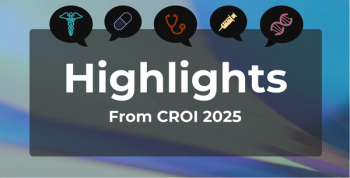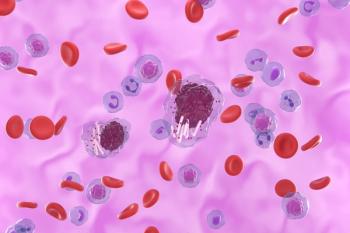
Fatty Liver Found in Half of Patients With Type 2 Diabetes, Study Finds
Key Takeaways
- Fifty percent of T2DM patients also have NAFLD, confirmed via ultrasound, with elevated liver enzymes and altered lipid profiles.
- NAFLD and T2DM are key components of metabolic syndrome, sharing risk factors like obesity and insulin resistance.
Nonalcoholic fatty liver disease (NAFLD) was linked to elevated liver enzymes in type 2 diabetes mellitus (T2DM) in a recent study, urging early detection and comprehensive care.
Fifty-percent of individuals with
The prospective observational cohort study is published in the
“The rising rates of obesity are increasingly linked to a surge in conditions such as type 2 diabetes mellitus and nonalcoholic fatty liver disease, which has rendered the management of these patients more complex than ever,” wrote the researchers of the study. “Clinicians must recognize the extrahepatic manifestations associated with NAFLD, as early identification of T2DM is crucial for effectively managing these patients.” The study aimed to identify trends in NAFLD in individuals diagnosed with T2DM.
T2DM and NAFLD frequently coexist and are both considered key components of metabolic syndrome.2 NAFLD affects up to 70% of individuals with T2DM and encompasses a spectrum of liver conditions ranging from simple steatosis (NAFL) to nonalcoholic steatohepatitis (NASH), and eventually cirrhosis. Overweight, obesity, and insulin resistance are major risk factors contributing to the development of NAFLD. Management strategies for patients with both NAFLD and T2DM focus on improving insulin sensitivity and glycemic control, offering dual benefits in addressing both conditions.
This study was conducted at a medical college and hospital, enrolling 100 patients diagnosed with T2DM who attended the general medicine outpatient department.1 All participants provided written informed consent after receiving detailed study information.
Inclusion criteria required patients to be aged 35 or older, of either sex, and had T2DM for more than 3 years. Patients were excluded if they had pre-existing hepatic or cardiovascular conditions, chronic kidney disease, a history of alcohol use, or were taking hepatotoxic medications. Each subject underwent a comprehensive clinical evaluation, including measurement of height, weight, and body mass index (BMI), with overweight defined as a BMI of 25 to 29.9 kg/m² and obesity as greater than or equal to 30 kg/m².
Diagnosis of diabetes followed American Diabetes Association guidelines. Abdominal ultrasonography was performed, identifying NAFLD based on characteristic bright liver appearance. Following an 8- to 10-hour fast, blood samples were collected to assess fasting and postprandial glucose, lipid profile, and liver enzymes.
Out of the 100 individuals diagnosed with T2DM, ultrasonography confirmed NAFLD in 50 patients, who were categorized as Group A, while the remaining 50 patients without fatty liver comprised Group B. BMI was significantly higher in Group A (22.38 ± 5.59 kg/m²) than in Group B (19.08 ± 6.17 kg/m²; P = .0001). Lipid profile analysis revealed significantly lower high-density lipoprotein (HDL) levels and higher low-density lipoprotein (LDL) and triglycerides in Group A. Although Group A had a higher total cholesterol level than Group B, the difference was not statistically significant (P = .08). Additionally, liver function tests showed markedly elevated levels of serum aspartate aminotransferase (AST), alanine transaminase (ALT), and alkaline phosphatase in Group A compared with Group B. Conversely, the AST/ALT ratio was higher in Group B than in Group A.
“The increasing rates of obesity, type 2 diabetes, and NAFLD has made patient care more complicated than ever,” wrote the researchers. “Health care providers must know the extrahepatic manifestations linked to NAFLD, as timely detection of T2DM is essential for the effective management of these individuals.”
References
1. Shah A, Bakerywala A, Brahmbhatt RN, et al. The occurrence of nonalcoholic fatty liver disease among individuals with diabetes mellitus: A comparative study. J Pharm Bioallied Sci. 2025 May;17(Suppl 1):S767-S769. doi: 10.4103/jpbs.jpbs_2016_24
2. Dharmalingam M, Yamasandhi PG. Nonalcoholic fatty liver disease and type 2 diabetes mellitus. Indian J Endocrinol Metab. 2018 May-Jun;22(3):421-428. doi: 10.4103/ijem.IJEM_585_17
Newsletter
Stay ahead of policy, cost, and value—subscribe to AJMC for expert insights at the intersection of clinical care and health economics.









































